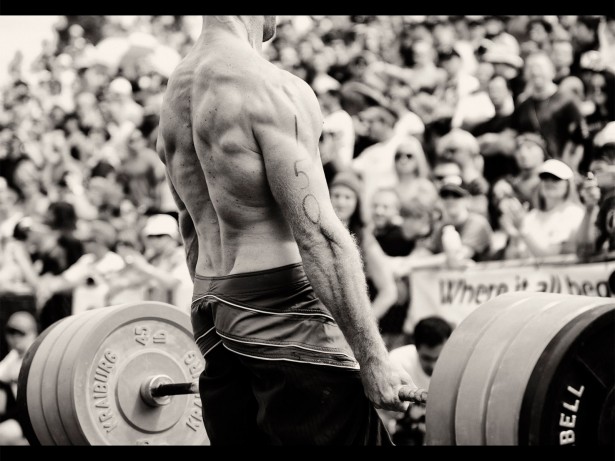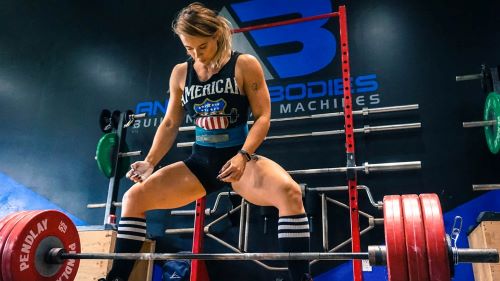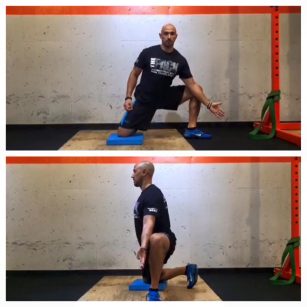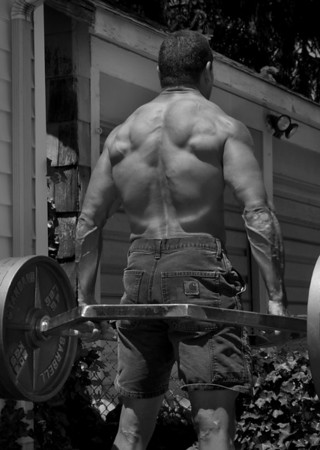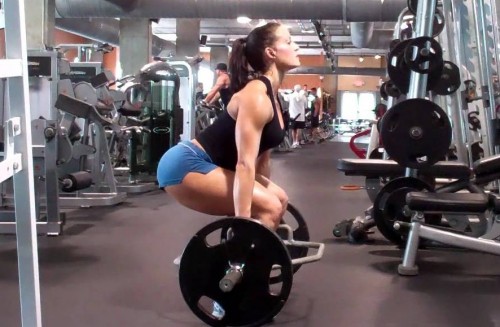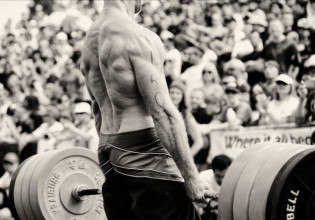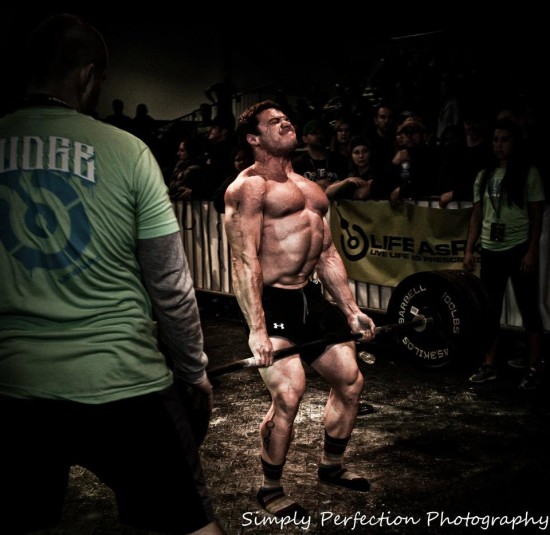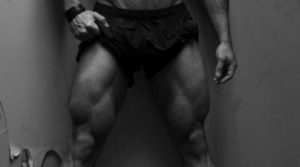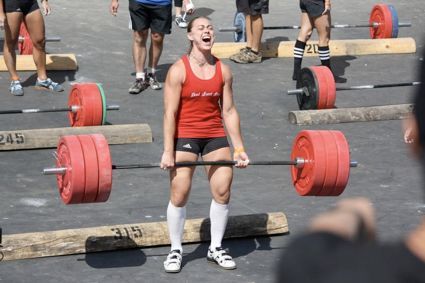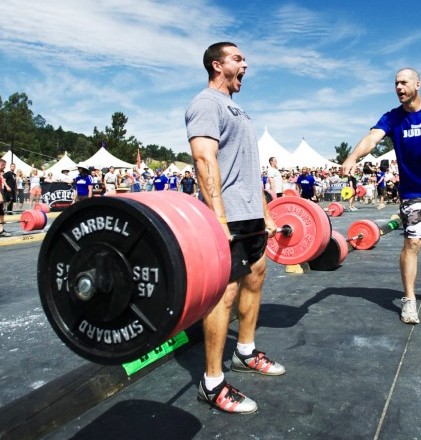A Fail Proof System for Finding the Best Deadlift for You
Deadlifts make life 467% better, it’s a scientific fact.
Ok, maybe 467% better is a little bit of an overstatement but you get the point. Not only are they awesome but they’re one of the most functional movements you can do.
It’s hard to find another exercise that matches the strength, muscle and performance benefits like the deadlift. 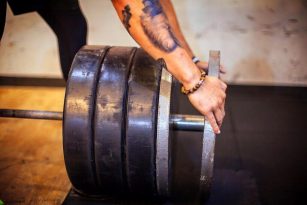
When you ask serious lifters and strength coaches their top 3 exercises the deadlift is always in the running. If it’s not, don’t trust that person. Some coaches throw the squat in the mix for top exercise and if we take a close look, the two movements look very similar depending on which variation you choose.
The main difference between squats and deadlifts is this…
With the deadlift, you hold the weight in your hands, which causes more upper back (specifically erector spinae activation) compared to the squat which will cause more lower back (lumbar spinae activation.) Also, deadlifts are typically more hip dominant as opposed to squats which are more quad dominant. But this will depend on the variation that you choose.
With each of the different exercise variations, our body has different angles and positions which stress different muscles and joints.
Sumo deadlifts, wide stance low bar squat, conventional deadlift, high bar squat, full squat, power squat, snatch grip deadlift, block pull, box squat, front squat, deficit deadlift, etc.
So What Deadlift Variation Is the Best?
Once you can take into account what muscles you are trying to improve, your strengths and your weaknesses, it makes it much easier to pick the appropriate deadlift variation.
This article will give you the rundown of the highly competitive deadlift variations so you can decide for yourself.
Whether you’re looking to get bigger legs, a faster 40-yard dash or sneak your way into the winner’s bracket of the next local CrossFit competition the deadlift can help you get there.
Deadlifts (Cheaters Allowed)
There’s a friendly rivalry between the conventional deadlift and the sumo deadlift. Some consider sumo deadlifting cheating. Let’s take an unbiased look at this thought.
Yes, the sumo deadlift shortens the total distance the bar has to travel. But spreading your feet out wider, slightly pointing your toes out and starting with a more upright body position does not change the law of gravity.
It doesn’t change the amount of weight on the bar.
If there is 500 pounds on the bar, it is still 500 pounds whether you decide to lift it with your feet close or wide.
Now that we got the cheating out of the way, how do you know which is best for you?
If you are in a powerlifting meet or the goal is to lift as much weight as possible so pick the variation that is going to play to your strengths. Duh. If you’re someone who just likes to lift weights to look and feel better pick the variation that feels the best for you. It’s not a competition.
There isn’t a cool club for one or the other.
The only thing that isn’t cool is being laid up on the couch for 6 weeks with an L5, S1 disk herniation because you listen to the random jerk off on the internet who told you to deadlift conventional deadlift even though it doesn’t feel right for you.
I’m going to briefly touch on a few key points in each so you can make a more educated decision for your future gains.
Proper, Traditional, Mainstream (Conventional Deadlift)
Often referred to as the truest test of strength, almost all of the best deadlifts in the world were performed in the conventional stance.
The conventional deadlift is characterized by a close stance.
A good way to find your conventional stance is to jump as high as possible 3 times in a row and stick the landing of the third jump. Wherever your feet land is a good position to start your stance.
You can mess around with to find what is most comfortable over time.
The conventional deadlift will require a more horizontal starting position (upper body is more horizontal to the floor) which puts more stress on your lower back. This isn’t necessarily a bad thing but it is important to keep in mind especially is you have had lower back issues before.
This doesn’t necessarily mean avoid the conventional deadlift if you have a weak lower back.
This might actually mean you add more of them into your program to strengthen the muscles but pay close attention to executing the lift with proper form and stopping before your form breaks down.
See, that’s what I mean by knowing what variation is best for you at the moment.
Cheating, Unconventional, Unorthodox (Sumo Deadlift)
Now onto the fun stuff, the cheating deadlift. I personally prefer to deadlift sumo when competing in powerlifting meets because not only am I strongest in that position but I feel the safest.
As you know from the last section the conventional deadlift adds more stress to the lower back. In fact, my only lifting injury ever was a disk herniation from conventional deadlifting 3 years ago.
Do you want to know the ironic part?
I always felt most comfortable deadlifting sumo but was spending some time doing conventional deadlifts beltless to strengthen my abs and lower back. 465 x 5 was the actual set I hurt it on and I have it on video.
Man did that backfire, that destroyed my lower back and put me out of commission. It was a pain in the ass to rehab, literally. The cool part was I ended up deadlifting 600lbs about a year later (yea, it was sumo.)
The sumo deadlift is characterized by a wide stance, with toes slightly pointed out and a more upright upper body. The actual width of your stance will vary depending on the flexibility of your hips and legs and also the anatomy of your pelvis.
This doesn’t mean completely avoid sumo deadlifts if you have tight legs and hips. This may actually help improve it.
In the spirit of keeping your hips moving like a salsa dancer so you can burn holes in the dance floor/make lots of sexy time/pick pumpkins like a boss here is the…
The half-kneeling adductor dip is a stretch that will help you get into a more comfortable sumo deadlift position. Here’s how to do it.
- Setup in a half-kneeling position. I know the hard floor hurts. Put a pad under your knee don’t try and act like a tough guy.
- Bring your foot out to the side with your toes pointing straight. Set Up so the heel is directly under the knee.
- Use your elbow on the same side to guide your knee to stay straight or push slightly back.
- Now shift your weight over that foot making sure to keep your shoulders and hips squared to the wall in front of you.
- Breathe and tell everyone how good this feels.
- Repeat 2 x 8-10 times.
When comparing the two variations, the sumo deadlift involves the quadriceps more than the conventional deadlift and the more upright starting position meaning less stress on your lower back
Ok, I just laid out the two most popular ones for you but I have another trick up my sleeve.
Enter The Wild Card and Your Saving Grace
You know that weird contraption that people stand in and do some sort of squat/deadlift hybrid combination move?
That’s called a hex bar or trap bar and it’s actually one of the best deadlift variations and the one you probably should be doing.
If you aren’t a competitive powerlifter you don’t necessarily have to do straight bar deadlifts.
Wait, you just wrote an entire article about deadlifts and now you tell me I don’t have to do them?
Hear me out. Yes, deadlifts are awesome but you can get the same awesome benefits from doing them with the hex bar but also keeping yourself much safer.
If you’re a competitive lifter or athlete it’s also important to note that the hex bar deadlift also allows for greater power outputs than a traditional barbell.
The hex bar deadlift will increase muscle activity of your quads (these are the muscles that extend your knee) more than either of the straight bar deadlift variations and reduces the stress on your lower back.
If you want to hit your quads, even more, you can stand on a box 2-4 inches and then sit your hips even lower than you normally squat for a deadlift. This is called a duck stance squat.
More quads and less lower back stress? Holy crap where do I sign up?
Right here!
One more thing I forgot to add. Since the bar puts the weight in the most advantageous position for you, you can lift the most weight with the hex bar deadlift. That means more strength, muscle and power potential.
When it comes down to it the hex bar deadlift is the best deadlift option for anyone who doesn’t plan on competing in a powerlifting meet.
If you do plan on competing you need to practice with a straight barbell but you can also get the benefits of a hex bar further away from your competition.
Key Takeaways
The more advanced the lifter the more quadriceps activation they are going to get when deadlifting. This just happens because you get better at performing the exercise. It’s just a skill that takes time to master.
The biggest factor deciding which deadlift you should pick is going to be what feels the most comfortable for you.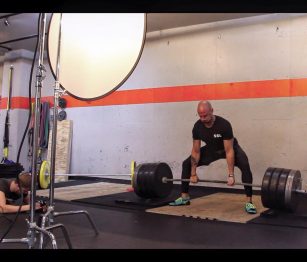
Remember these few keys…
The sumo deadlift uses a more upright torso position that will work more legs and put less stress on the lower back. The conventional deadlift will use a more horizontal starting position will work more lower back.
While I recommend using a belt for anyone competing in a meet and performing lifts near max, you don’t necessarily need one all the time. In fact, wearing one all the time will take away some activation of your obliques and core.
Use a belt as necessary but don’t abuse it.
Happy deadlifting.
For any questions about one of the all-time greatest exercises ever, leave a comment below or email me at [email protected].
For more tips, tricks, and hacks to immediately add pounds to your deadlift watch this video.
Joey Percia
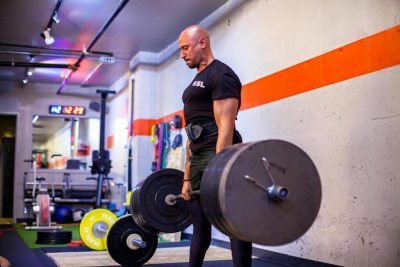
Joey Percia is a coach at a training studio in New York City and also runs a successful online training business. He is a competitive powerlifter in the 181 division and has totaled 1400lbs. Joey has a Masters degree in Exercise Science, is a CPPS coach, Westside Barbell Coach and CSCS. Follow him on Facebook, you will be glad you did.


